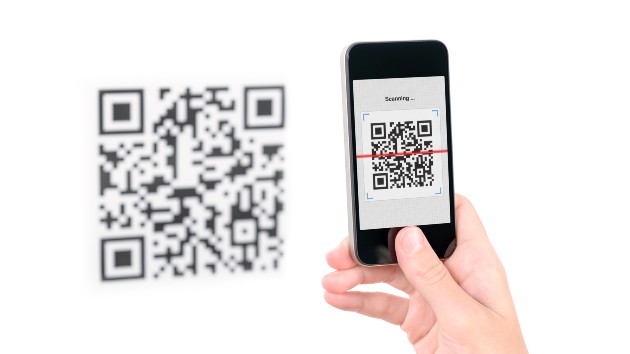
pressureUA/iStock
pressureUA/iStockBy DR. ALEXIS E. CARRINGTON, ABC News
(NEW YORK) — When your child fractures a bone and gets a cast, the experience can be very overwhelming for both the child and parent. It might be hard to focus and remember the instructions given at the doctor’s office. But what if you could scan your cast with your phone at home to get up to speed with everything that was said?
A new peer reviewed study done by orthopedic surgeons at Children’s Hospital of Orange County, California found that a familiar technology, QR codes, short for quick response, may be a useful tool in helping children who have received casts and their families better manage their health. The study showed the majority of the people found scanning the QR code to get information kept them from calling their doctor’s office to ask questions or book an appointment.
“The genesis for this study was that most patients don’t recall what you tell them in the clinic or office,” lead researcher Dr. John Schlechter, a pediatric orthopaedic surgeon at Children’s Hospital Orange County, said in a press release.
Previous studies, in fact, have shown that only 50% of the information told during an office visit is remembered by patients.
“If we put the QR code on the cast, they have on-demand access to instructions,” Schlechter said.
QR codes are like bar codes, often used for scanning for groceries, concert tickets and even for identification. To test whether having this on-demand access to information would make a difference, Schlechter and his team gave 50 of his pediatric patients from birth to 18 years old special casts with a scannable QR code. Each QR code was linked to custom information created by their own doctor, with instructions how to take care of the cast and what to do if something happens to it.
The instructions that appear from scanning the QR code are the same instructions the surgeon tells the patients and their parents once the cast is placed.
Out of the 50 children in the study, 90% of the parents responding on behalf of their child found it useful and convenient to have the QR code. Of the people who actually scanned the code, a little over half said the information on the website from scanning the QR code was helpful enough to keep them from calling their doctor’s office to ask questions or book another appointment.
“There was no real cost [for adding the code], it was just printing on a piece of paper and the laminate was done by the hospital,” said Schlechter, who led the study. “I think it’s something that can be done pretty simply and from a low cost perspective.”
This study only looked at children receiving casts, but according to Schlechter, “You can do this in diabetes education, such as [on] a fingerstick kit, put it on a card or however you want to do it. You can link it in your hospital to information you want it to have. I’ve even seen [QR codes] used on sports braces by companies, which I’m sure takes them to their websites and maybe gives them information on the medical equipment.”
Orthopedic surgeon Dr. Alton Barron, who was not involved in the study, agreed: “I would say there’s a lot of applications for it. I think it’s a very useful tool. I just think we don’t want to further technologically impair the doctor and patient relationship because when someone is seeking information, they’re often seeking contact with their doctor or health care provider.”
Amidst the COVID-19 pandemic, with resources and staffing especially overworked, these QR codes might even minimize the number of unnecessary visit to the emergency room.
Added Schlechter, “Because the patient found information on the site that the QR code directed them to, it prevented a call to the physician, therefore I would imagine this would prevent an urgent care visit in an ER.”
Copyright © 2020, ABC Audio. All rights reserved.